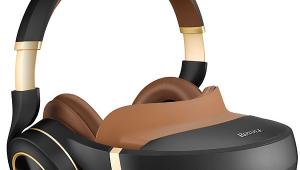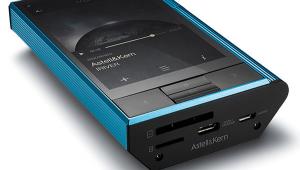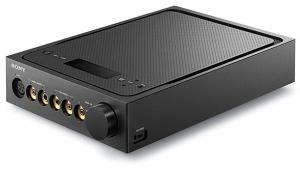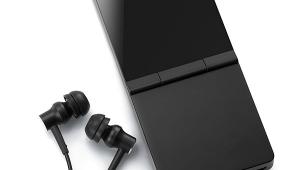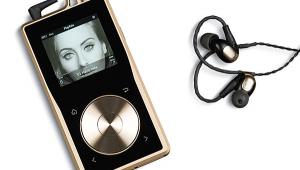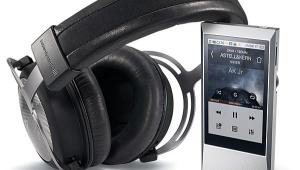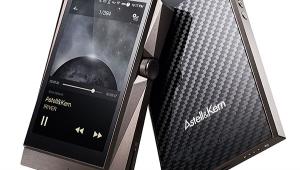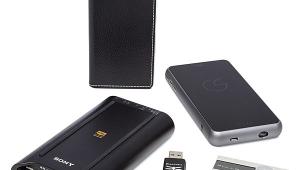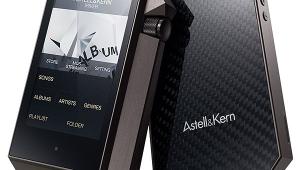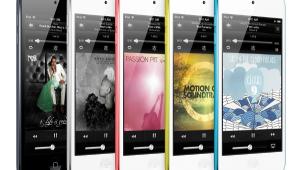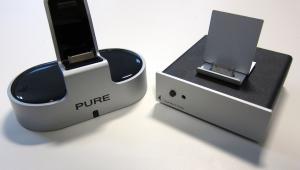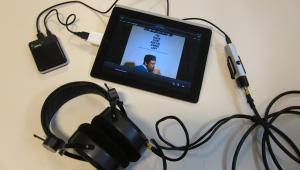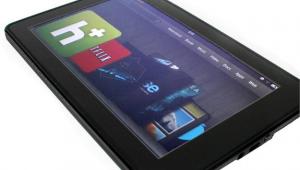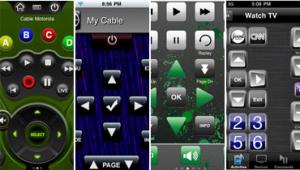B&W Zeppelin Air iPod Music System
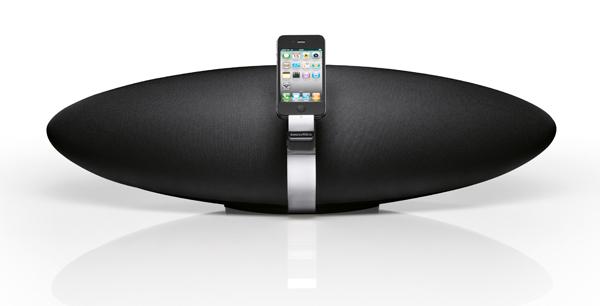
I've never been a big fan of paying for brand names for their own sake. Build quality? Yes. Performance? Absolutely. Aesthetics? Sure. Ease of use? Certainly. Each of those has value, and it often makes sense to pay more, even a lot more, for any one of them. But sometimes, in the course of shopping for whatever, you encounter an entry from a well-respected or even elite brand that at first glance seems so outlandishly priced you have stop and wonder: what am I really paying for here?
Suffice to say that was me when Bowers & Wilkins first suggested I take a little ride with the Zeppelin Air, the company's $600 iPod dock. I'd heard occassional demos of the Air's predecessor, the original Zeppelin introduced in 2008, and although it sounded pretty good, aside from its design and surprisingly robust power I hadn't been blown away. The Air, it seems, is a different animal. It's a 2011 revision that brings the Zeppelin into modern times, most obviously with wireless streaming courtesy of Apple AirPlay, which allows you to conveniently push content to the system directly from your iPhone or from the iTunes library on your WiFi network-attached computer. But there's a lot more that's gone on under the hood of this makeover than mixing in a little 802.11g. Indeed, the Zeppelin's distinctive shape is just about the only thing that hasn't had an update in this new model. As for what you're really paying for...well, we'll get to that.
A New Zepp Takes Off
The minute you unbox the Zeppelin Air you'll know it's hardware with serious aspirations. It's 25 inches wide and weighs in at 13.5 pounds, commanding a firm grip and cautious cradling of its long body to hoist it to its table or countertop resting place. After doing so, you'll probably take a step back and admire its good looks. The original industrial design was done by renown UK designer Morten Warren, and it's hard to fault the cosmetics or the build quality. The dark black acoustic fabric that swaddles the front hides a fine mesh grille that fully protects the drivers, and the buttons for Power/Input and Volume Up/Down that sit atop the stainless steel band that wraps the Air's belly click solidly to the touch. Only the plastic iPod mounting arm that curls up from the bottom seems a bit delicate—don't mistake it for a carry handle. That said, many users won't need it thanks to AirPlay. Perhaps future versions could make this removable to better preserve the cabinet's blimp-like charm. A single multicolored LED in front of the docking connector indicates the unit's status
Beneath the grille are five drivers. For each of the two main channels there's a 3-in glass-fiber cone midrange and a 1-in tube-loaded Nautilus aluminum dome tweeter. Bass is reinforced with a dedicated paper-Kevlar 5-inch woofer. The midrange is an inch smaller than that in the original Zeppelin, but it has improved performance said to provide more open sound, particularly with voice. Likewise, the new tweeter is a high performance driver picked up from the company's well-regarded MM-1 desktop speaker, and was selected here for its extra detail and better imaging.
Like it's predecessor, the Zeppelin Air is a 2.1-channel system, but amplification has gone from a combined 25 watts for each midrange/tweeter pair and 50 watts for the woofer to a biamplified arrangement wherein each tweeter and mid now gets its own dedicated 25 watt class D amp. A significant upgrade was made in the digital-to-analog converters, which went from 48 kHz/16-bit to 96/24 audiophile DACs that upsample all sources (including content acquired via AirPlay). Ditto for the DSP engine, which is now a higher-powered chip running B&W's own in-house firmware to provide dynamic EQ for extended bass performance. The original Zepp's plastic ABS enclosure has gone to a stiffer glass fiber-filled casing that's said to improve dynamic range, and new, longer cabinet ports (visible from the back) work with the rest of the upgrades to deliver deeper bass.
The end result of all this is a published frequency response claiming -6dB points of 36 Hz and 42 kHz, which adds more than 10 dB of bass extension to the original Zeppelin and just about doubles the high frequency extension. I ran a 20 Hz-to-1000 Hz low-frequency sweep tone through the Air just to see where its business end wakes up, and found that the unit did indeed start putting out detectable bass energy somewhere between 35 and 40 Hz, albeit without the power associated with a big woofer.
Air Time
Putting aside improvements to the audio engine, the addition of AirPlay and other user-friendly features are intended to make the Air both better sounding and easier to use than its predecessor. A USB port on the back can be used to connect to your PC or Mac to facilitate firmware upgrades and allow direct transfer of digital content from the computer to the audio system—no need to first grab analog off the iPod as was required by the original Zeppelin. The USB connection also lets you conveniently sync your iPod or iPhone to your PC when it's mounted on the Air's dock. There's an Ethernet port on the back that's used for setup, an analog/digital audio mini-plug input for an ancillary source, and a composite video output that allows you to send video from your docked iPod or iPhone to your display while using the Zeppelin Air for the audio.
Once AirPlay has been configured (see below), you can simply boot up the iPod app on your touch, iPhone, or iPad and stream directly from the device's library right to the speaker system—you just call up your content as usual and select your Zeppelin Air¬ from a pop-up menu that appears on your touchscreen. Multiple Zepps in the house can be served simultaneously, albeit with only a single stream from your library. You can also tap all the music and internet radio streaming apps on your iDevice and send that to the Air as well, so your Pandora and Rhapsody accounts are well accounted for. Alternately, you can stream wirelessly from the iTunes library on your computer, either with the iTunes software's on-screen controls or with the free Apple Remote app available at the iTunes store.
While I was at the App store, I also downloaded B&W's free Zeppelin Air app. It's a cool party-music/social media app. Once your guests have also downloaded it to their iPhone, iPad, or iPod touch, they can send you tracks from their own iTunes music libraries for purpose of building a master playlist. You can then edit and send the playlist to any AirPlay compatible device—not just the Zeppelin. I found the app intuitive to use and was able to quickly build and play back a playlist, though I lacked a ready supply of iCentric pals that would have allowed me to check out the community jukebox feature.
The Air has a set-and-forget 5-position low-frequency EQ trim that's available only via the touchscreen on your mounted iPod or iPhone. It has settings labeled -3 through +1 to let you dial down the bass if the unit sits near a wall or corner, or crank it up slightly if that's your taste. Mine was situated on a counter about two feet from the back wall, and sounded right in the default 0 setting.
After upgrading the Zeppelin's firmware with a program downloaded from B&W's Web site, I went about setting up the AirPlay function. This means linking the Air to your local wireless network and then telling the iTunes software on your computer to look for it. Given the Air's lack of a video display, the process involves temporarily connecting it to your PC or Mac via the Air's Ethernet port and using your Web browser to access an internal set-up page where you can identify your network and type in your password. (Alternately, you can use the Safari browser on your mounted iPhone or iPod touch). I'll spare you the entire process except to say that I found the setup unintuitive and cumbersome, and any error (such as mistyping your password, as I did on the first try) results in having to do a factory reset by manuvering the end of a paper clip into a tiny and hard-to-find dimple switch buried on the Air's back panel. Don't get me wrong—it's not rocket science and eventually I got through it. But I wasn't surprised to see that the most prominent thing on the Air's product support page at B&W's Web site is a step-by-step instructional video for this that plays automatically upon landing. A lot of people must need help. Given that you're connecting up a laptop anyway, perhaps B&W should consider sending wizard software on a CD or USB stick to help automate and simplify this process.
Up, Up & Away
When I finally got down to the real business of listening to music, I was pleased to quickly realize that I'd have walked through fire if that's what it took to get this thing working. I auditioned mostly Apple Lossless files ripped from CDs, using both the wireless connection and the iPod mounted in the dock (there was no difference that I could readily detect). First stop was a track I almost always use as an opener to gauge any new audio gear: Bill Berry's For Duke (M&K Realtime), a 1978 audiophile recording of Ellington tunes captured with stunning cleanliness and immediacy. The Air sounded stellar on "Take the A Train." The opening piano notes immediately came to life in all their fully rounded glory, with superb tonality, and took their place in what proved to be a reasonably wide soundstage that went a bit past the far edges of the cabinet. All the reedy detail I know is present in the saxophone was easily revealed, as was the decay of the drummer's initial cymbal strikes and the fine shimmer of his brushed cymbal. When Berry's cornet blasted out its first startling notes against the silence of a pause in the accompaniment, it lept into the space in front of the Air and came across without even the slightest hint of shrillness these notes can generate in lesser systems. Despite the Air's ability to generate some output below 40 Hz, it never really energized the room, and there was a bit of extra emphasis on the mid- to upper bass frequencies. But the effect was extremely tuneful and well defined lows that allowed me to follow the stringed bass violin line in this jazz recording quite clearly, and the sound never took on the indistinct, unnatural bloat that often plagues this product category. The Zeppelin also seemed to play fairly loud without distortion for such a small system. I was impressed.
While listening to the Air I was repeatedly struck by what I felt was the unusually good (and highly engaging) soundstage imaging for this type of product, especially given it's size and the the short spacing between its left and right channels. A live recording of The Weavers singing "Ramblin' Boy" at Carnegie Hall demonstrated the Air's ability to recreate the space of an open, reverberant venue, including a nice smattering of front-to-back depth. When the audience is asked to join in on the chorus, I could easily hear the space in front the stage open further, and the Air did a superb job of delineating some individual voices and details from the blended mass of vocals.
Indeed, voices were particularly well rendered on the Air, projecting both reasonable body and gobs of inner detail lost by many systems, even full rigs with separate speakers. James Taylor singing "Line 'Em Up" came across with the rich, mellifluous tonality buried in his best recordings, and a little taste of Diana Krall doing "Frim Fram Sauce" revealed the very fine, gravelly detail in her vocals that gives it such raw sensuality in such a smooth outer package. That's often whitewashed out by many systems.
Of course, orchestral selections are among the most revealing you can throw at any sound system, and the Air availed itself here with aplomb. It's lack of true deep bass became more evident on tracks like the Cincinnati Pops Orchestra doing Strauss' Thus also Sprach Zarathustra, where a deep 20 Hz organ note bascially disappeared, but the recording showed great dynamic range, a fine spatial sense of the hall, and smooth, well-rendered horns that didn't grate. The opening section of the John Adams composition Shaker Loops (as played by the San Francisco Symphony), titled "Shaking and Trembling," has the violins working overtime and urgently in their highest register. The Air handled it beautifully, lending body and a smooth delivery of the massed strings, again avoiding the stridency I've heard from this recording on other systems.
Conclusion
In the end, I decided what you pay for in the Zeppelin Air, with its $600 price tag, is all the above: design, build quality, ease of use, and most of all sonics that are a dramatic cut above any of the usual iPod dock fare. I don't want to overstate it too badly—it's still a compact music system that's ultimately limited by its size, power, and the fixed narrow distance between its speakers. But I was pleasantly surprised to encounter what proved to be a genuine audiophile experience. The best testament to this is that I set up the Air directly across the room from my desk, about 5 feet away, and found myself distracted again and again by the way the music reached out into the room and grabbed me while I tried to work. I suppose you can't ask for much more.
Specs
Type: Powered iPod dock, 2.1 channel, 3-way vented
Tweeter: 1 in, Nautilus™ aluminium dome (2)
Midrange: 3 in, glass-fiber (2)
Woofer: 5 in, paper-Kevlar (1)
Amplfier: Class D with DSP; 4 x 25 watts, 1 x 50 watts
Cabinet: Gloss black with stainless steel trim, glass-fiber filled ABS composite
Inputs: iPod/iPhone 30-pin (1), Ethernet (1), USB (1), analog/optical digital audio 3.5mm mini jack (1), WiFi/AirPlay
Outputs: Composite video RCA phono (1)
Dimensions (W x H x D, in): 25.2 x 6.8 x 8.2
Weight (pounds):13.5
Company Info
Bowers & Wilkins
bwspeakers.com
